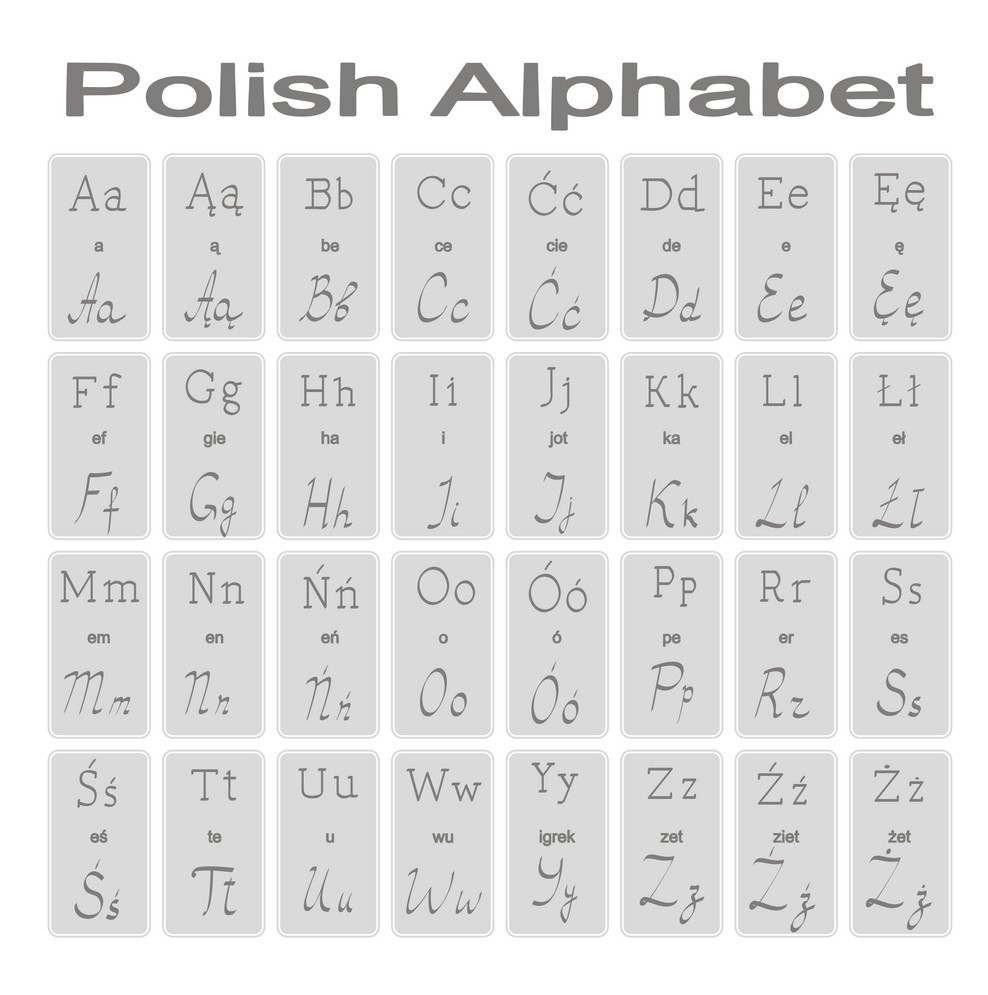There are about 6500 spoken languages in the world, but among this vast bunch, Polish is rather unique. It is said that the first known sentence in Polish “Księga Henrykowska” dates far back to 1270 and relates to the description of routine home activity. Polish is the official language of Poland and is the second most spoken Slavic language, it is also the 3rd most spoken language in the U.K only after English and Welsh. So whether you are globe-trotting or trying to expand your business around Europe, there is a high chance you may come across this widely spoken language. It is already obvious that this month’s language of focus is Polish, so this blog post is a sequel to the interview with our talented translator Dorota. With that being said, here are a couple of facts about Polish.
A few facts about Polish
Plenty of alphabets: Polish joins a list of languages with more alphabets than that of English language. The 33 letterPolish alphabet comprise 9 vowels and 23 consonants, there are 9 Polish letters which are not part of the English alphabets which are; ą ć ę ł ń ś ó ź ż. In the same light, 3 English letters q, v, x are not part of the Polish alphabets. Polish also boasts of over 200,000 active words which are more than that of English (170,000).

Surprisingly widely spoken: The language has over 50 million active speakers, 35 million of whom speak it as a first language. Polish is spoken in parts of several western Slavic countries like Slovakia, Belarus, and Czech Republic. This means that proficiency in Polish breeds familiarity with languages spoken in most of the Slavic countries. Polish can also be traced to South American countries like Argentina and Brazil.
Rich history: The roots of Polish can be said to be thousands of years old. Spoken Polish origin dates far back into the Middle Ages, while written Polish has been in existence for over a millennium. The language has evolved to contain a blend of Latin, English, French German and Russian.
Grammatical complexity: The mere sight of Polish words gives the impression that it is a complex language. After all, the single word “Dziewięćsetdziewięćdziesięciodziewięcionarodowościowego” with 54 letters can attest to the fact. It is definitely not easy to learn or speak as it has several unique tongue twisters due to the presence of digraphs like cz, ch, sz, rz, dz, dż and dź. Polish like some other languages attaches grammatical gender to certain words. For example, (stół) is masculine, a book (książka) is feminine.
Latin origin: The growth of Christianity in Poland during the late 8th century heavily impacted the influence Latin had on the Polish language significantly. This influence drastically reduced over time as other languages like Ukrainian, Belarusian and Lithuanian also left meaningful footprints on modern-day Polish.
Variety of dialects: Various varieties of Polish exists which may differ by region. There are five major dialects which are Silesia, Malopolska, Mazovia, Wielkopolska and Kashubia, all of which are distinct from one another by accent. The “standard” Polish is the one easily understood by all.
In essence, Polish can be considered a difficult language to learn since it has a lot of exceptions and also double negatives, it is also a really interesting and fun language to learn. But the world is a global village and people are constantly moving from one place to another. At the same time, businesses are constantly trying to break geographical barriers to reach new customers. So if you desire to break into the Polish market, we have learned professionals like Dorota who are ready to put your translation needs at the forefront. Whatever your needs may be, from translation to interpretation to content localization, Translationsinlondon is the service for you.